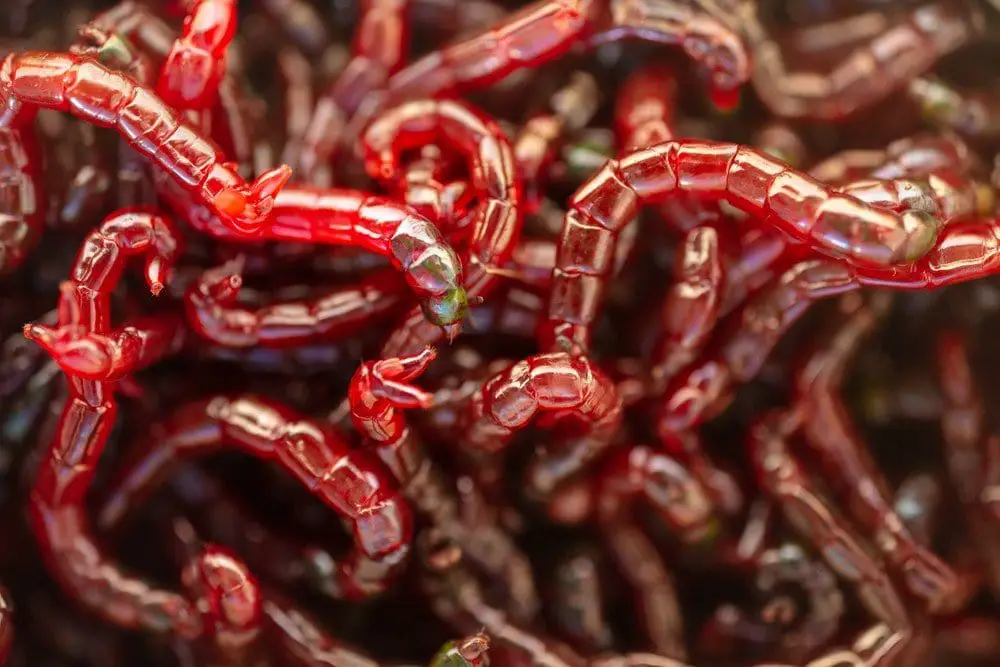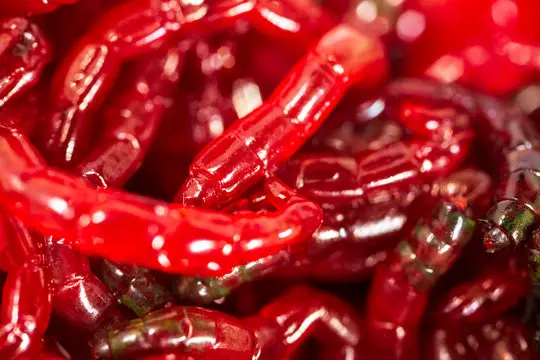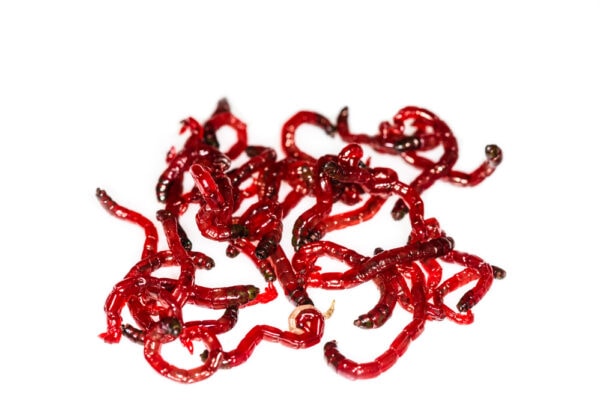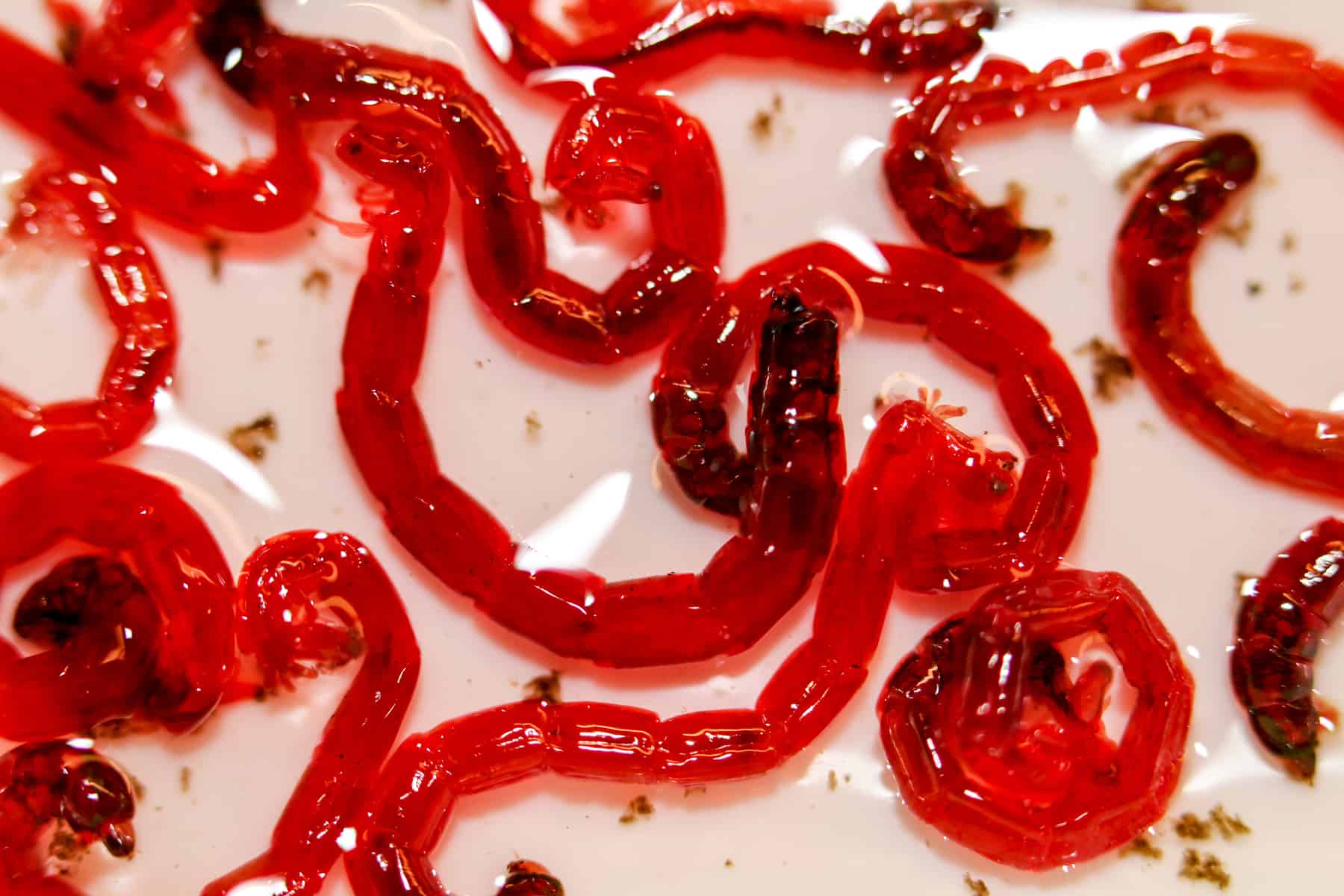Whether you’ve housed marine pets for a long time or are new to the lifestyle, there is always something new to learn about the dos and don’ts of handling an aquarium. Food is a particularly vast topic, and you need to research what you can and cannot feed your Fish. This directly impacts the health and wellbeing of your aquarium pets, and if you are even the slightest bit careless, you might need to call the vet.
Bloodworms are a hot topic on their own. They are a popular choice among aquarium owners and are used with a lot of different fish types. But once you start looking into it, things get complicated. In our guide on using bloodworm fish food, we cover there is to know about using bloodworms as aquarium food.
Deal with Fussy Feeding Fish

When I first got myself an aquarium pet, I started to find food pellets accumulating at the bottom. I soon realized that some of my Fish wasn’t eating the food I was giving them. I tried a bunch of different options, but bloodworms were the ones that worked best.
You might be shocked to find out that Fish can also be picky with their food. If you notice some fish getting weaker and find uneaten food pellets bunched up at the bottom of your tank, then try shifting to bloodworms. Rough estimates suggest that about 99% of fish species feed on bloodworms. So if you are cornered out of options, bloodworms are most likely going to work out.
Additionally, what makes bloodworms an even better choice is their nutrient composition. Bloodworms are rich in proteins as well as other nutrients that your Fish require. They are also very cheap and easy to get.
Bloodworm Basics

Bloodworms are known for their characteristic bright red color -it’s even in the name. While the term “bloodworms” is generally used for the genus glycera type or Midge fly type of worms, it is an umbrella term for a number of different worm species. Many of the bloodworms you will get in stores are the larvae of midge fly type that don’t bite. These can grow up to 14 inches tall. While most commercial bloodworms are non-biting, the ones that do bite are usually very venomous.
You might be wondering where these worms get their iconic color from and what purpose it serves. The color originates from a red pigment-protein called the iron-porphyrin protein, which is present in their blood tissue. Additionally, the hemoglobin (a component in Blood vital for transporting oxygen) content of bloodworms also allows them to survive in low-oxygen environments. Another testament to the rough and tough nature of bloodworms is their ability to thrive in polluted waters.
With this level of survivability, bloodworms also make for a strong base for the food chain. Because they are food for many aquatic animals like salamanders, shrimp, turtles, and crabs, bloodworms are a vital primary food.
The Three Types of Bloodworms
When you’re thinking of feeding your aquarium animals bloodworms, you’ll have to choose between the three main types that are easy to find commercially. These are freeze-dried bloodworms, live bloodworms, and frozen bloodworms. Read on to find out what each type is and figure out which one suits your needs best.
Bloodworms Served Freeze Dried
Freeze-dried bloodworms are the easiest way bloodworm fish food out there. All you have to do is take out the freeze-dried bloodworms and dip them in water for a few minutes to help soften them. Then you just drop in the softened bloodworms in the aquarium.
You can find these in small plastic tubs that weigh about 0.46 oz. This size should generally be sufficient, but that depends on the number of mouths you are feeding.
Living Bloodworms
Like any live food variety, it’s harder to find live bloodworm fish food than the other frozen varieties. This is simply because live worms don’t last very long, even with refrigeration. Once you get your hands on a small bucket of live bloodworms, we recommend popping it in the fridge immediately and then finishing them up within 2 to 3 days.
When you are feeding your tank fish live bloodworms, it’s important to keep in mind that the water that the worms were already living in is not good for your aquarium tank. This may cause harm to the other companions in your tank. To make sure the water is kept out, you have to wash your live bloodworms thoroughly before putting them into the tank. Secondly, keep in mind that you can’t put the water from the live container into your aquarium.
Bloodworms frozen
When it comes to convenience, there is nothing better than frozen bloodworms which can last up to a solid six months in your freezer. Additionally, with such a long store time and such extreme temperatures, the chances of parasites clinging on and infecting your aquarium are also pretty low. All this comes at the cost of your Fish’s natural ways of feeding, though.
Your Fish won’t be chowing down on rock-hard frozen bloodworms. Instead, you are supposed to thaw it in some tank water once out of the packaging. Then you are expected to strain out the softened food and feed your fish.
Who Can You Feed Bloodworms To?

Bloodworms, as we mentioned earlier, are a popular pick among Fish, where almost all fishes you have will feast on a deliciously red and creamy bloodworm. But even though all fishes, saltwater and freshwater, are either carnivores or omnivores, you can’t rely on bloodworms in all cases.
The issue with feeding too many bloodworms stems from their nutritional composition. While it is true that bloodworms are rich in healthy nutrients like proteins, they lack greatly in other areas. So if your fishes and marine pets are feeding on too many bloodworms, then they are getting largely proteins and nothing more. This can lead to deficiencies due to a lack of essential amino acids, vitamins, and minerals.
Additionally, one thing to note about bloodworm fish food is that it is ideal if you plan on getting your marine pets to mate and breed. This, too, trails back to the high protein content. Fishes that are about to breed can really use that boost in protein to develop their offspring.
At-home Bloodworm Breeding Practices
Live bloodworms are ideal, so why not breed them yourself? While there are benefits to this, breeding bloodworms on your own is a complex task. A bloodworm’s lifecycle involves egg, larva, pupa, and adult midge.
The obstacle here is to find ways to swarm and mate the midges while keeping them captive because of their need to fly.
Bloodworm Allergies

Even if your bloodworms aren’t the venomous kind that has dangerous bites, you still need to be on the lookout for health risks. Bloodworm allergies aren’t a very common phenomenon, but it’s not unheard of either. Be on the lookout for red spots, rashes, and itchiness once you’ve handled bloodworm fish food. These might get more severe if you had a biter. In any case, it is best to see your doctor right away.
If you aren’t allergic to bloodworms, your Fish might not react to them well. Once you start feeding your fish bloodworms, be vigilant of any difference in their behavior. If you notice unusual behaviors or appearances in your aquatic animals, head straight to the vet.
Frequently Asked Questions regarding Bloodworms
Do Bloodworms pose a Danger To Humans?
Bloodworms are mostly non-threatening towards humans. However, the same can’t be said for the bitter types. If you get bitten by a bloodworm, it will sting like a bee. You need to be even more aware if you are dealing with the live Glycera genus.
Are Bloodworms Bitters?
Like most other animals, Bloodworms use their teeth as a defense mechanism. Although similarly, you should be fine if you are careful in dealing with them properly.
Do Bloodworms suck on Blood?
Many people confuse the name “bloodworm” for a vampirish blood-drinking habit. This is simply incorrect. Bloodworms are only named as such because of their colors, so you shouldn’t be worried about being sucked dry.
How frequently Should Fish feed on Bloodworms?
Like we talked about earlier, overfeeding bloodworms can lead to illnesses, deficiencies, and constipation. Therefore it’s best to only feed bloodworms to your Fish a maximum of twice a week.
What are the most common bloodworms uses?
Bloodworms are the french fries of the underwater world. Because almost all fishes love this bright delight, bloodworms are most commonly used bloodworms as supplementary protein-boosting nutrients for their aquariums.
In Conclusion
Bloodworms, if fed to your Fish well, can be a great way to increase protein intake and support breeding among aquatic animals. But it’s important to understand the different variations in bloodworm fish food available to you in order to make the most of it.

